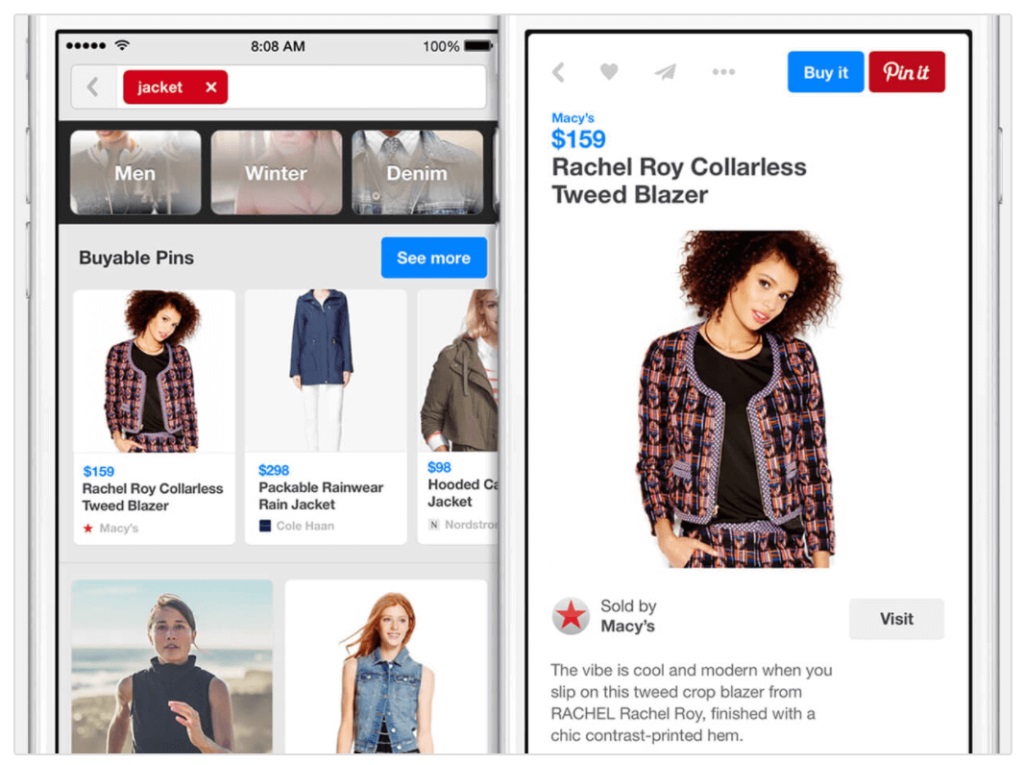Do you have a fashion e-commerce website or blog that you’re proud of, but you’re having trouble getting people to visit and buy things from your shop? One important thing that many fashion sites don’t think about is search engine optimization (SEO) for fashion e-commerce. Even though it sounds technical and boring, it’s really important for helping people find your site. You might have a website that’s full of beautiful clothes and great ideas, but if people can’t find it on Google or Instagram, it might as well not exist. The good news is that with some careful changes, your fashion site can become more visible in search engines. Let me show you what you need to do to get started.
The Fashion SEO Basics
Before we dive into fashion-specific strategies, let’s review the building blocks of SEO that apply to any site. I’ll try to make this quick and painless, I promise!
First, you need to incorporate keywords that people are searching for into your content. If you’re a high-end designer focused on evening gowns, for instance, you’ll want to work phrases like “expensive cocktail dresses” and “celebrity red carpet dresses” organically into your site.
But don’t go keyword crazy trying to stuff as many of them in as possible – search engines will penalize you for that. Be selective and strategic instead. The keywords you focus on should be relevant to your niche and seamlessly woven into your content.
Next, you need backlinks from other sites pointing back to your pages. This shows search engines that your site is trusted and valued as an authority. Reach out to other respected blogs and sites in the fashion world and try to get featured or linked to their content.
And speaking of authority and trust, make sure your website is secure, speeds up quickly, and looks professionally designed. All of these factors contribute to higher search rankings.
Okay, those are the broad brushstrokes! Now let’s get into the intricacies of SEO for fashion e-commerce specifically.

Perfecting Product Pages
Chances are you’re selling something on your site, whether it’s your designer products or curated looks from other brands. Your product pages are crucial SEO runway models – they need to strut their stuff if you want to increase conversions.
Here are some sequin details to add shine:
Compelling Page Titles
A sexy pair of shoes or purses deserves an equally eye-catching title for its page. Include your most important, targeted keywords – but get creative! “Red Suede Ankle Booties” might be accurate but you miss the chance to spark curiosity.
I’d go for something like “The Ruby Slippers You’ll Click No Matter the Destination” or “Chic Ankle Booties for Sassy Statement-Makers.” Have fun with it! Just keep your titles under 60 characters so they don’t get cut off in search results.
Detailed Product Descriptions
Don’t just post a picture and some specs! The descriptions you write for items on your site are gold for SEO. Dig into details about materials, fit, and design elements – ultimately helping your ideal customer imagine themselves rocking the piece.
Buzzwords like sustainable, handmade, small-batch, etc. can go a long way if they authentically apply. As do any awards or celebrity connections you can name-drop. Yeah, yeah…I know that seems braggy. But trust me, it works!
Alt Text for Images
Speaking of images…you should include alt text for every photo, diagram, and other visual on your site. This helps search engines understand what’s in the image and if it relates to someone’s query.
For a product page, describe exactly what we see in each picture – the color, cut, product name, key attributes, etc. Leave no sequin unseen for the search engines! Having accurate alt text helps boost rankings and click-through rates.
Leveraging Trends & Seasonality
Runway shows set the tone for each fashion season, influencing mainstream tastes and shopping behavior. Pay attention to big trends making headlines – like mini bags or neon colors – and rapidly reflect them in your content.
Create blog posts and product collections focused on what’s hot right now. Link to outside trend reports from major publications like Vogue and Elle to tap into their authority, which raises yours.
The beginning of each season – Winter, Spring, Summer, Fall – is also the perfect time to create fresh content that ranks well quickly. Come up with new keyword phrases specifically tailored to that time of year.
Think things like:
- Spring workwear essentials
- Fall wedding guest dresses
- Summer music festival outfits
- Winter ball gowns
Rinse and repeat for every season! This strategy works year after year.
Runway to Red Carpet: Leveraging Celebrities
Speaking of leveraging authority, celebrities are one of the most powerful allies for fashion SEO. What the stars wear on and off the runway influences huge buying trends.
When a celebrity wears a piece from your brand or a look you’ve styled on your site, promote it like crazy! Create a dedicated blog post or page showcasing the outfit, namedrop the star, link to external news coverage about their look if any, and the whole shebang.
Having an “As Seen On” section that calls out big celebrities wearing your brand is marketing magic. Even just posting paparazzi shots of stars in pieces similar to yours, and linking each image to your related product pages, can boost SEO and sales.
You can also reference celebrities known for specific signature styles as inspiration points in your content. Write things like “Channel your inner Jackie O in this polished shift dress and pillbox hat.” Name recognition goes a long way!
Optimizing for Featured Snippets & Visual Results
Here’s an insider SEO for fashion e-commerce tip for unlocking more traffic from search engines: optimize your content for featured snippets and visual carousels.
Featured snippets are those special callout boxes at the very top of Google search results, usually numbered “1.” along with a concise answer to the query. Visual carousels are essentially the image-based version – they display a slideshow of pictures prominently in the results.
To snag one of these coveted spots, you need to provide a very specific answer to likely keyword questions:
- What accessories go well with animal print dresses?
- What are 5 essential items for a capsule wardrobe?
- How can I style straight-leg jeans for a night out?
Craft authoritative list posts, Q&As, or how-tos optimized around these types of questions related to your niche. Make sure you feature plenty of useful images as well! By explicitly and concisely answering the questions people are asking, you’ll thread the needle right to the top.
Interlinking Internal Content
Here’s an easy-to-overlook SEO tactic with a major impact: interlink related content on your own site! The pages on your fashion website or blog shouldn’t exist as separate islands.
Cross-connect them by linking your blog posts to relevant product pages, related category archives, or other blog content. This helps search engines see all the information you offer on a topic and also creates a more cohesive, rewarding reader experience.
Pro tip: when linking internally, use anchor text that includes your target keyword. Instead of just saying “Click here to see our related handbags,” say “See our summer straw handbags.”
Much more impactful text for users and search engines!

Optimizing Images to Attract Click-Throughs
Your fashion site surely relies heavily on eye-catching photography of gorgeous styles, glam settings, and beautiful models. You want every image to convince visitors to linger longer and click over to related content, right?
A few quick SEO-boosting edits can help:
- Fill up image space creatively. Zoom in on details or style entire coordinated looks within each frame. Leave less empty background space around your models.
- Adjust brightness, contrast, shadows, etc. to make colors pop more. Crisp, vibrant images attract more clicks.
- Give photos descriptive names like RedOffTheShoulderCocktailDress.jpg instead of random strings of numbers and characters that convey no meaning about the content.
- Include your target product or blog post keyword phrases in the image titles and alt text – but make sure they flow naturally and match what people would logically search related to that image.
Alright, those are my best tips and tricks for thread-the-needle fashion SEO success! Let me know if you have any other questions.
FAQs
What are the most important on-page SEO elements for fashion?
The title tags, headers, product descriptions, image alt text, and internal linking on each page play a huge role in fashion SEO. Optimizing these to target relevant keyword phrases helps pages rank for searches in your niche. Don’t overstuff clunky keywords though – incorporate them fluidly into well-written content.
Should my blog and shop product categories match?
Keeping your site architecture cohesive is hugely important. Make sure blog post categories and product catalog sections align. For example, have coordinated “Dresses” and “Little Black Dresses” options for shoppers to browse seamlessly. This improves click-through rates and on-site user experience.
What’s better – targeting short or long-tail keyword phrases?
Long-tail key phrases with 3 or more words, like “off the shoulder, floral cocktail dresses under $100” are less competitive and help you rank for very specific searches. But you still need short, popular phrases like “cocktail dresses” for casting a wider net. Find a healthy balance of LS and LT keywords to optimize.
How often should I publish fresh content?
Search engines favor sites with frequent new content. For a fashion site, I recommend publishing 2-3 blog posts per week as a minimum. Cover trending topics, seasonal style advice, designer news, etc. Repurpose content into multiple formats too – an Instagram carousel, TikTok video, and blog post from one photo shoot, for example.
I don’t sell products yet – how can I optimize my site?
No e-commerce function is no problem! Focus your site on ranking informational fashion content aimed to build authority and audience first. Top 10 lists, style advice, designer spotlights, runway coverage, etc. Then eventually launch actual shopping features or partnerships informed by your expertise. SEO success starts with valuable content.
Last Words
We covered the fashion SEO for fashion e-commerce essentials today! By focusing on keywords, trends, formatting, images, and interlinking, your site can rank higher. Embark on a journey to enhance your online presence with SEO for the Travel Industry: Optimize Your Website for Global Adventures, striking the perfect balance between ranking high and captivating your audience. Remember, don’t over-optimize at the expense of creating amazing content; find that sweet spot to truly dazzle the world with your travel style. And if you have any fashion SEO questions, feel free to reach out – let’s ensure your digital voyage is both optimized and stylish!







